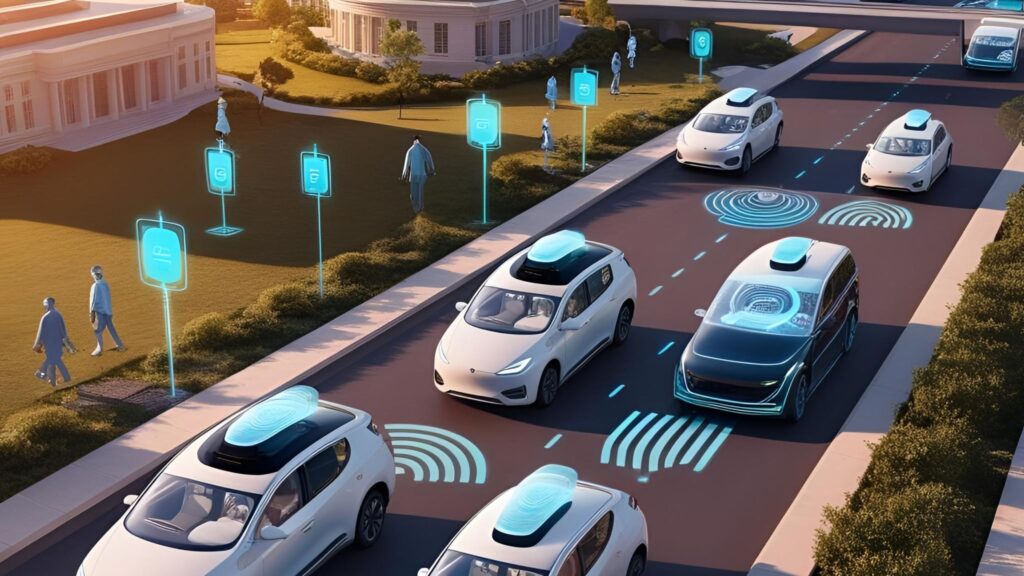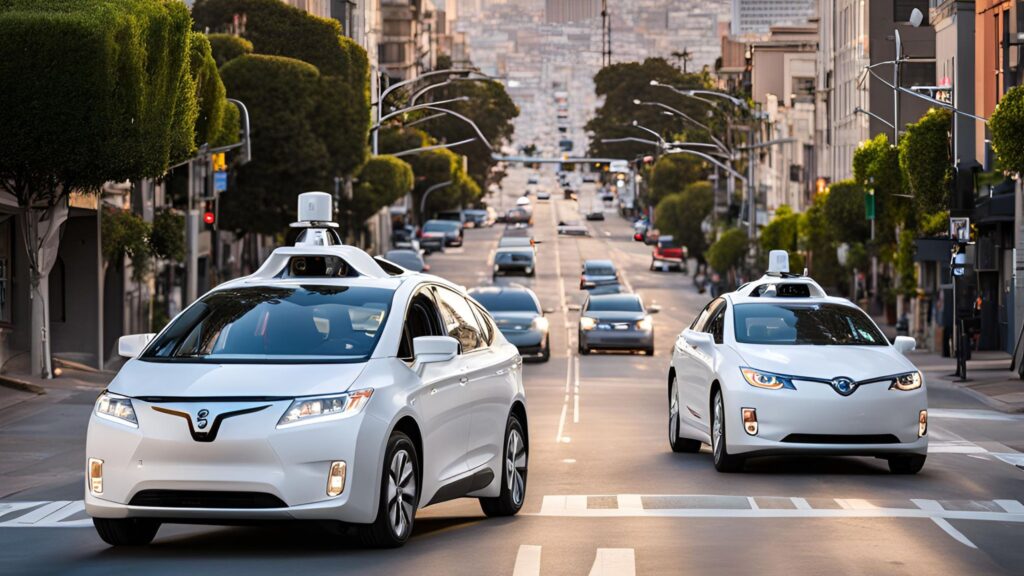April 2025 was a dynamic and defining month in the autonomous vehicle (AV) landscape. From Tesla’s much-anticipated robotaxi rollout plans to Waymo’s continued expansion across U.S. cities, the race toward fully driverless transportation entered a new, more mature phase.
In the United States, a major shift in federal reporting regulations gave AV companies—particularly those deploying semi-autonomous systems—greater flexibility in how they disclose safety data. Simultaneously, legacy automakers and tech upstarts alike unveiled key partnerships, new hardware platforms, and roadmaps hinting at scalable, real-world deployment.
This roundup takes a detailed look at the biggest developments from April 2025 in the autonomous vehicle space.
Regulatory Shifts
The Trump administration, in April 2025, introduced policies aimed at accelerating AV deployment, positioning the U.S. as a leader in the global race against competitors like China. The National Highway Traffic Safety Administration (NHTSA) announced updates to federal regulations, easing safety requirements and reporting obligations for AV manufacturers. These changes were framed as a response to industry complaints, particularly from Tesla CEO Elon Musk, about overly restrictive rules stifling innovation.
Key Regulatory Changes
- Exemptions from Federal Safety Standards: The NHTSA revised rules to allow domestically produced AVs to qualify for exemptions from certain Federal Motor Vehicle Safety Standards (FMVSS). For example, vehicles without rearview mirrors or steering wheels can now operate on U.S. roads, provided they meet alternative safety criteria. This move directly benefits companies like Tesla, which is developing the steering-wheel-free Cybercab, and Waymo, whose vehicles rely on sensor arrays rather than traditional mirrors.
- Reduced Crash Reporting Requirements: The Trump administration relaxed rules mandating AV manufacturers to report crashes involving self-driving systems. This change, announced by U.S. Transportation Secretary Sean Duffy, aims to reduce administrative burdens and encourage innovation. Tesla, which has faced scrutiny over its Full Self-Driving (FSD) software, is expected to benefit significantly, as the company has been critical of mandatory reporting. However, critics argue this could obscure safety data, making it harder to assess the real-world performance of AVs.
- Competitive Push Against China: Duffy emphasized that the regulatory overhaul is part of a broader strategy to outpace Chinese AV developers, who have made significant strides in robotaxi deployment. The administration’s framework is designed to give U.S. automakers like Tesla, Waymo, and General Motors’ Cruise a competitive edge by streamlining testing and deployment processes.
California: A Testing Ground for Heavy-Duty AVs
On April 25, the California Department of Motor Vehicles (DMV) proposed regulations to allow testing of self-driving trucks weighing over 10,001 pounds on public roads. This marks a reversal of the state’s previous ban on heavy-duty AVs, which had limited testing to lighter vehicles. The proposal aims to enable companies like Aurora Innovation and Kodiak Robotics to test autonomous semi-trucks, potentially revolutionizing freight transport.
- Details of the Proposal: The regulations outline safety protocols, including mandatory human safety operators during initial testing phases and rigorous permitting processes. Companies must demonstrate robust cybersecurity measures and provide detailed testing plans to the DMV.
- Economic Implications: California’s ports, particularly in Los Angeles and Long Beach, handle a significant portion of U.S. freight. Autonomous trucks could reduce costs and improve efficiency, but the proposal is likely to face pushback from labor unions concerned about job losses and from environmental groups worried about increased truck traffic.
- Industry Response: Aurora Innovation, already planning driverless truck operations on Texas highways, expressed interest in expanding to California. The company emphasized that its safety case must be fully validated before deployment, reflecting a cautious approach amid heightened scrutiny.
Stricter Rules for Passenger AVs
In contrast to the heavy-duty truck proposal, California tightened regulations for passenger AVs. On April 25, the DMV issued proposed rules requiring companies to conduct at least 50,000 miles of testing with a safety driver before applying for driverless testing permits. This applies to companies like Waymo, Tesla, Zoox, and Cruise, which operate robotaxi services or plan to do so.
- Public Comment Period: The DMV opened a 45-day public comment period, ending June 9, 2025, to gather feedback on the proposal. The regulations aim to balance innovation with public safety, addressing incidents like a 2023 Cruise accident in San Francisco that led to a temporary suspension of its driverless operations.
- Impact on Tesla: The new rules could delay Tesla’s robotaxi plans in California, as the company’s FSD system has not yet accumulated the required testing miles in the state. Tesla’s focus on camera-based AI, rather than LiDAR or radar, has also raised questions about its ability to meet California’s stringent safety standards.
Tesla
Tesla dominated AV headlines in April 2025, driven by CEO Elon Musk’s bold promises and the company’s response to regulatory changes. During Tesla’s Q1 2025 earnings call on April 22, Musk reiterated plans to launch an unsupervised robotaxi service in Austin, Texas, by June 2025, using 10-20 Model Y vehicles equipped with FSD. He also projected “millions” of autonomous Teslas on U.S. roads by the end of 2026, a claim met with both enthusiasm and skepticism.
On April 24, 2025, Norway’s Statens vegvesen (Norwegian Road Authority) granted Tesla a two-year exemption to test its Full Self-Driving (FSD) system in supervised mode on public roads, marking a historic milestone for Tesla’s autonomous driving ambitions in Europe. This development, while outside the U.S., is relevant to the broader context of Tesla’s FSD rollout, which is a key focus of its U.S.-based robotaxi plans
Volkswagen and Uber
Volkswagen of America and Uber unveiled a landmark partnership on April 24 to launch a commercial robotaxi service using autonomous electric VW ID. Buzz vans. The service, set to begin in Los Angeles in 2026, will leverage Volkswagen’s autonomous driving software, developed by Mobileye, and Uber’s ride-hailing platform.
Volkswagen’s autonomous vehicle subsidiary, ADMT, plans to start testing in Los Angeles later in 2025, pending California DMV permits. The partnership aims to deploy “thousands” of robotaxis over the next decade, positioning Uber as a central platform for AV services.
Aurora Innovation
Aurora Innovation announced plans to launch driverless trucking operations on Texas highways in April 2025, targeting the I-45 corridor between Dallas and Houston. The company emphasized that its safety case must be fully closed before deployment, reflecting a cautious approach amid regulatory and public scrutiny.
Autonomous trucks could transform logistics, reducing costs and addressing driver shortages. Aurora’s move positions it as a leader in the AV trucking sector, with potential expansion to California if the state’s heavy-duty testing proposal is finalized.
Waymo
Waymo, Alphabet’s AV subsidiary, continued to lead in operational robotaxi services, with a significant presence in San Francisco, Los Angeles, and Phoenix. In April 2025, Waymo announced a new integration with Google Maps, allowing users to book rides directly through the app, enhancing accessibility.
Alphabet CEO Sundar Pichai hinted during an earnings call that Waymo might sell autonomous vehicles for personal ownership in the future, although no timeline was provided.
Additionally, Waymo revealed on X that it is now providing more than 250,000 fully autonomous paid rides each and every week across its service areas.
Nuro Goes to Japan
Nuro announced on April 15 that they would be bringing vehicles from their U.S. test fleet to Japan — marking Nuro’s first international data collection initiative and an exciting next step in scaling the Nuro Driver™.
Nuro said that Japan’s roads are known for their complexity and distinct characteristics, presenting an opportunity for the Nuro Driver to broaden the environments it understands and navigates — an essential step in building a truly generalizable autonomy stack. Nuro further explained that when combined with their other training data sources, the new effort accelerates their mission to develop a safer, more capable autonomous system.
Conclusion
April 2025 has been a pivotal month for autonomous vehicles in the U.S., marked by significant expansions, strategic partnerships, regulatory changes, and shifting industry dynamics. As companies like Tesla, Waymo, Uber, and May Mobility continue to innovate and scale their operations, the landscape of self-driving technology will continue to evolve.

I’m Dr. Brandial Bright, also known as the AVangelist. As a dedicated and passionate researcher in autonomous and electric vehicles (AVs and EVs), my mission is to educate and raise awareness within the automotive industry. As the Founder and Managing Partner of Fifth Level Consulting, I promote the adoption and innovation of advanced vehicle technologies through speaking engagements, consulting, and research as we progress to level 5 fully autonomous vehicles.


